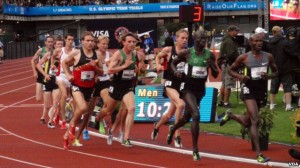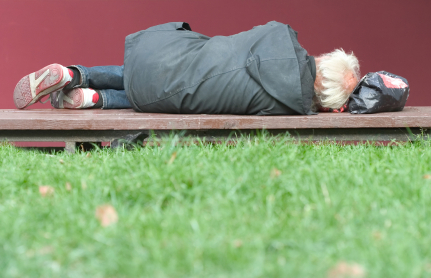Steve Haas is Chief Catalyst for World Vision, a global relief, development and advocacy organization dedicated to working with children, families and communities to overcome poverty and injustice. He provides the following analysis of the viral sensation:
There’s a cold efficiency to a wanted poster. Pinned publically in the Wild West, frontier citizens were informed of bad hombres and were encouraged to assist in capture. Like an Amber alert, the wanted poster told everyone what to focus on and why… justice and usually a nice reward.
In the past few days a viral YouTube call has been issued for the most likely of global criminals. Designated enemy number one by the International Criminal Court, Uganda’s Joseph Kony has eluded capture and trial for over 25 years, leaving a wide swath of personal and community destruction. An estimated 65,000+ children have become soldiers and sex slaves with another 2 million internally displaced (unable to live safely in their own homes) as a result of his rampaging drive of terror. Now, with the assistance of technology and the connectivity of social networks, the organization Invisible Children is rallying the world to make infamous Joseph Kony, “famous.”
Kony’s trail of destruction hasn’t been isolated to one country. Riding under the protection of some of the world’s most rugged terrain, his fighting force, the Lord’s Resistance Army (LRA), has terrorized vast reaches of African jungle from Uganda to the Central African Republic. Now down in strength due to the ravages of war, disease, and defections, Invisible Children’s founder Jason Russell estimates that 2012 is the year to finally bring Kony to justice.
Many were not familiar with the name “Joseph Kony,” but the 30 minute video challenge paints a picture of overwhelming barbarity, stupefying numbers of maimed and dead, and the resulting community tragedy. It must be false, right? It has to be exaggerated?
Some who are knowledgeable about the decades- old terrorist have vilified the organization which has brilliantly mobilized thousands of young people. They say the challenge to young activists is simple-minded and ill-conceived.
But is it really?
I became familiar with Kony and his guerilla band of thugs when visiting a southern Sudan community in 1999. Our delegation investigating the ongoing Sudanese conflict overnighted in a village that had recently been attacked by the LRA. The stories of their fresh encounter and the mental images they evoke haunt me to this day. Since 1995, World Vision has operated a Children of War Rehabilitation Center in Gulu Uganda, what has been the heart of the conflict. Over 14,000 have entered our doors and related true tales of a harrowing journey of rape, murder, mutilation and sexual exploitation. Our staff has worked tirelessly to deal with unspeakable physical and emotional trauma before reintroducing these children to their families and communities.
Regardless of the investigatory chatter, the move to bring down the globe’s bad boy is significant for a number of reasons. Like the wanted notices of old, today’s Kony 2012 campaign rides on the premise that notoriety is equivalent to international engagement. Although considerable calls for scrutiny of Invisible Children’s corporate practices have become a secondary story, in no way should we miss the importance of understanding the social and political environment both here and there that have allowed a person like Kony to exist for so long. In this way IC’s creative exploitation of technology takes societal mobilization against notorious criminals to a new level.
Simple? Perhaps. After all, what does a teen in Orange County, or a thousand in Orlando have to do with the arrest of a fugitive in the Democratic Republic of the Congo? As any international development professional will quickly point out after a quick review of the current Kony 2012 campaign, there are factors of poverty and politics too easily left untended in solving this long-running crisis.
Let’s not lose the significance of a new generation of justice seekers venturing out in engagement, however modest. We should be excited about the newfound awareness surrounding this man, and give appropriate direction in the form of historical background, pertinent information and engagement tools to satisfy their curiosity and passion.
Let’s keep talking about it.
The campaign organizers have set a deadline. By the end of the year, they want Joseph Kony to have been brought to justice. So what if they are successful? What’s the poster we’ll see next? Zimbabwe Mugabe’s 2013? Invisible Children of the Israeli Palestinian conflict? What about the end of childhood deaths due to Malaria by 2015?
Nothing is as easy as it appears. Apprehending global criminals or addressing confounding global issues requires more than wishing it so. Yet stating a clear aim and rallying the world to bring about justice is surely worth the attention and the hard conversations.
Watch it here:
Steve Haas is Chief Catalyst for World Vision, a global relief, development and advocacy organization dedicated to working with children, families and communities to overcome poverty and injustice. That means he works with community leaders and the major donor community, contributes to strategic planning on major issues, and communicates about global issues that affect the poor.
After getting his Bachelor of Arts degree in journalism from the University of Kansas, he labored along the Thailand border as a relief worker aiding Vietnamese and Cambodian refugees. With a Masters of Divinity from Fuller Theological Seminary in 1985, he went on to pursue postgraduate studies in Edinburgh, Scotland, returning to the US to serve the business community in Charlotte North Carolina. He lives in the Seattle, Washington area with his wife Susan and three children, Andrew, Erin and BJ.











